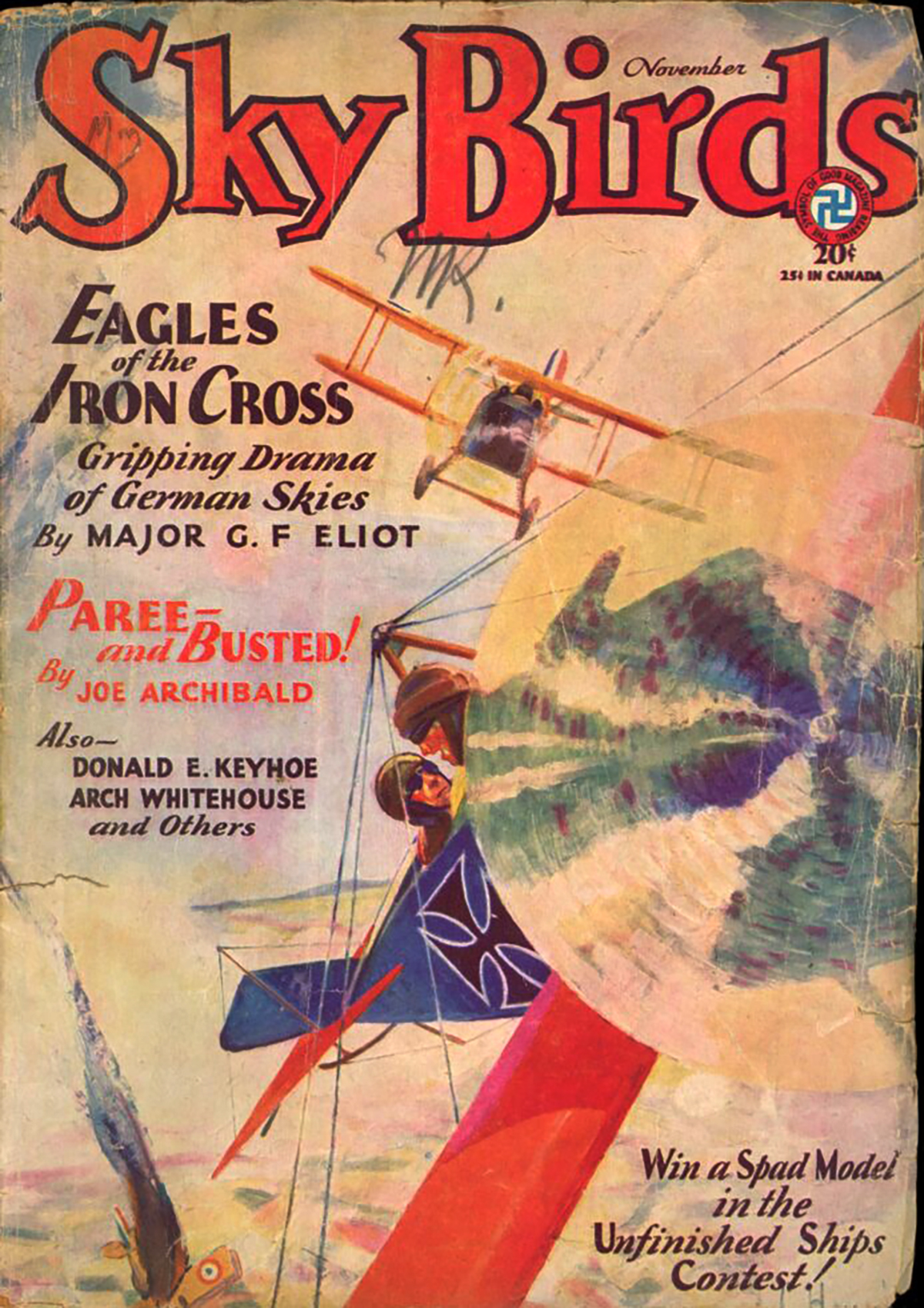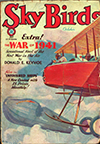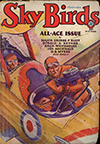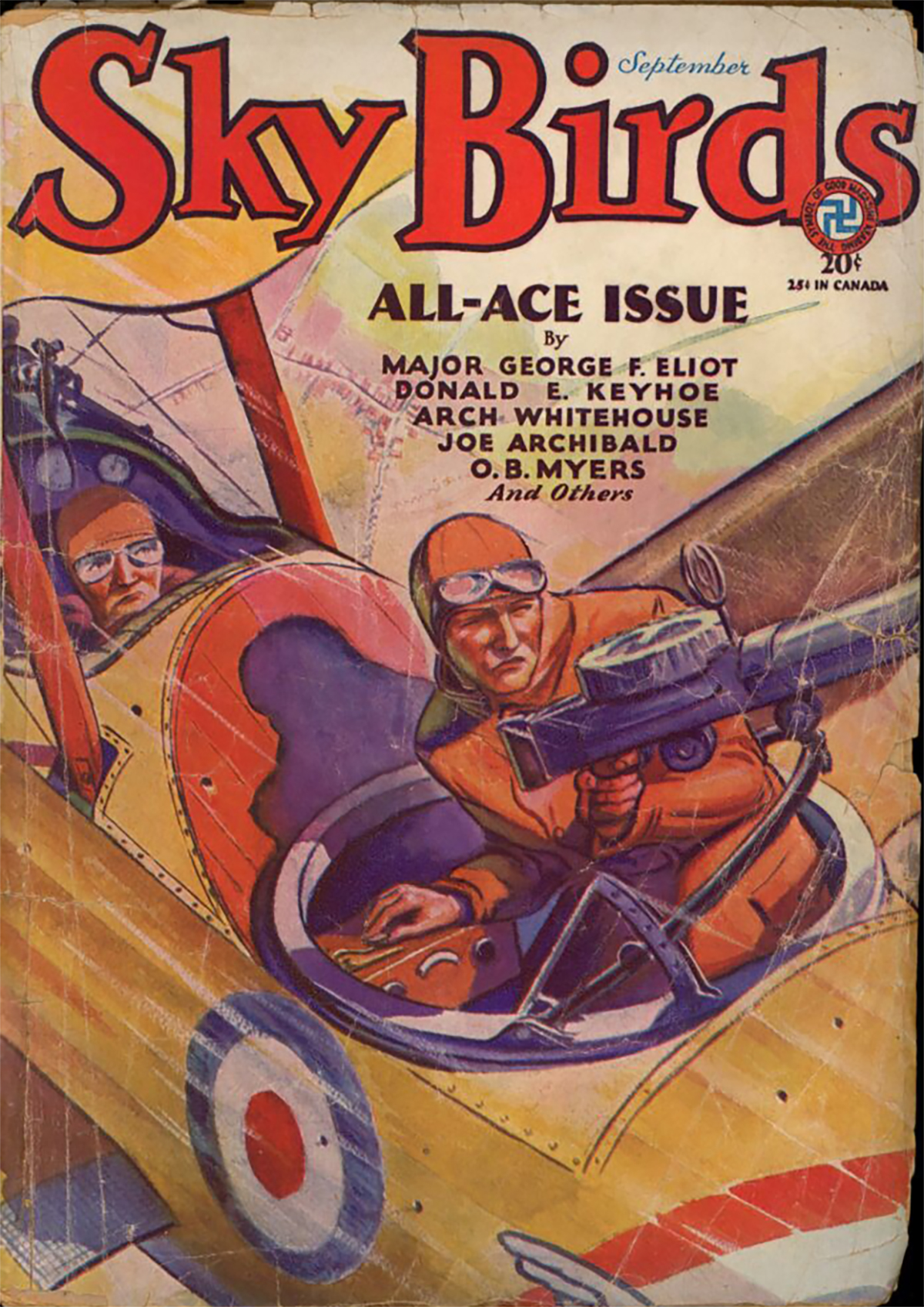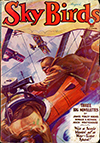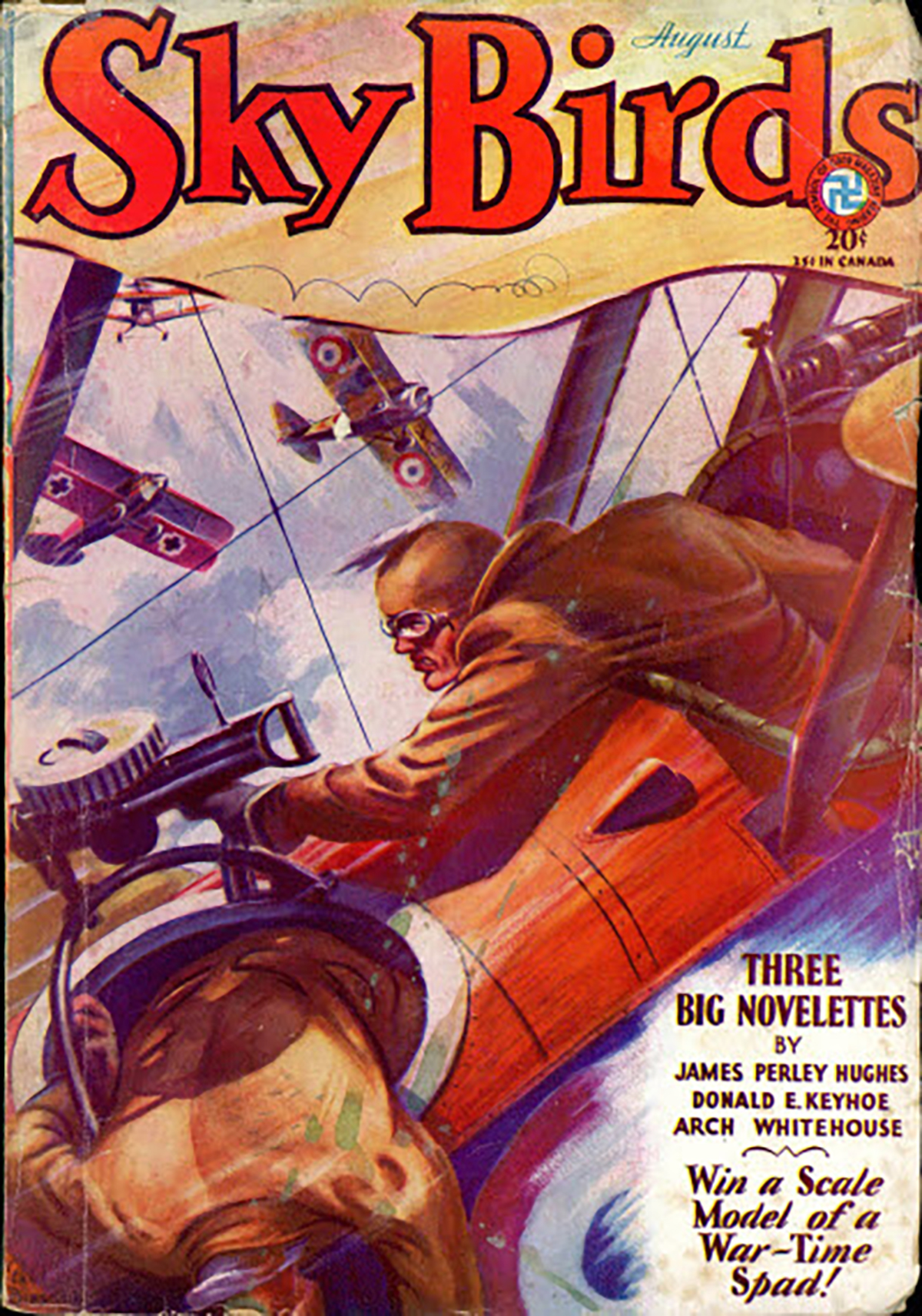THIS week we present “Bombing Richthofen’s Drome”—The story behind the cover of Paul Bissell’s April 1932 cover for Flying Aces! Bissell is mainly known for doing the covers of Flying Aces from 1931 through 1934 when C.B. Mayshark took over duties. For the April 1932 cover Bissell put us right in the action as the planes of Squadron 100 circle over Richthofen’s drome, bombs exploding down below!
Bombing Richthofen’s Drome
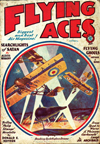 IT IS April of ‘17. Above, a full moon shines from an almost cloudless sky. Below, the landscape spreads away to the east—dark, except where a faint glimmer traces the twisting course of a river. To the west, against the horizon, continuous flashes show the progress of the battle of Arras, raging in its full fury.
IT IS April of ‘17. Above, a full moon shines from an almost cloudless sky. Below, the landscape spreads away to the east—dark, except where a faint glimmer traces the twisting course of a river. To the west, against the horizon, continuous flashes show the progress of the battle of Arras, raging in its full fury.
There men lie in trenches, waiting in mud and slime for the signal which, at dawn, will send them from their meagre protection into that hail of bullets sweeping across No-Man’s-Land. Here, high in the air, all seems peaceful. Only the droning of many motors tells that death is on the wing. Death in the form of a dozen or more planes, each bearing the blue, white and red circles of the British Air Service on its wings; each carrying its little bunch of “bouquets” slung carefully in their racks underneath—”bouquets” to be presented to Richthofen’s Jagdstaffel II at its home airdrome at Izel le Hameau.
Suddenly the squadron leader, sensing rather than actually seeing what he knows to be his objective, cuts his motor and, tipping up one wing, descends in a wide, easy spiral so that he may more carefully check against his map the few faintly visible landmarks below. The other pilots, too, have cut their motors, hoping that there is a chance of getting down a bit before their singing wires will give them away. They do not know that already word of their approach has been given, that the searchlights and defenses are already manned by tense and eager foes waiting for that signal which will turn the quiet night into an inferno.
ONE thousand—two thousand—three thousand feet the leader drops, spiraling slowly. His companions, maintaining a much flatter glide, circle about the airdrome, holding their elevation until the leader can find his objective and drop his phosphorus bombs to light up their target.
Now, when he is scarcely a thousand feet up, a siren screams from the ground; a brilliant beam of light stabs the night—another, then still others, all sweeping the sky searchingly until one, finding its prey, stops suddenly, and the others quickly focus with it on the old British F.E. 2B. Instantly the sharp bark of archies shatters the stillness. On the ground, men dash from barracks and hangars. Hoarse orders are sharply given, and though the range is still too great, machine guns are already rattling nervously.
On, with never a waver, comes the old British crate—slowly gliding in, as surely and quietly as if she were coming down to land in her own airdrome. Down, down—five hundred feet. Now she is directly over the airdrome. The observer can be seen clearly in the white, merciless gleam of the searchlights, peering over the side—awaiting his moment.
They level off, one hundred and fifty feet up, and from the under wing of the plane comes a dark rush earthward. Men dive for shelter, and an instant later all hell breaks loose. The whole field is lighted up with the flaming brilliance of the burning bomb. Two hangars are ablaze. Shrapnel and flaming onions scream through the night. Other bombs crash, and the machine-gun fire is incessant.
NOW the other planes can be seen, diving straight in, or swinging in a wide circle to take their places in the parade of terror and death. One after another they come through the terrific barrage, and with deadly aim drop their bombs into the German quarters. One terrific explosion follows another. Hoarse screams echo as some poor devil is blown to bits.
Above, the motors are roaring full on, as the planes circle again and again to drop the last of their deadly missiles.
After all, it is only a matter of minutes. Destruction has come and passed, leaving in its wake burning hangars, dead and maimed bodies, and huge gaping holes in the formerly smooth carpet of the airdrome.
Already the hum of the motors can scarce be heard, as the squadron wings its way back home. Back over the front line, through another baptism of shell-fire, and then to their own field. Dawn is just graying the east as the last plane glides in safely. Not a machine but is torn by shrapnel. Wings are riddled with bullet holes. But Squadron 100, of the R.F.C., has bombed Richthofen and come back without the loss of a ship or a man!

“Bombing Richthofen’s Dromeâ€
Flying Aces, April 1932 by Paul Bissell
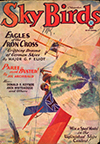 THE breaks of war! One minute you were a hero and the next going down in a burning crate. It happened on both sides of the line. In the picture on the cover this month we see the pilot and observer of an early German Taube monoplane which has just brought down a French single-seater. As the scout falls and bursts into flame, the Germans make the mistake of relaxing their vigil to share glances of congratulation. Then from their blind side comes an unexpected burst of fire from another scout.
THE breaks of war! One minute you were a hero and the next going down in a burning crate. It happened on both sides of the line. In the picture on the cover this month we see the pilot and observer of an early German Taube monoplane which has just brought down a French single-seater. As the scout falls and bursts into flame, the Germans make the mistake of relaxing their vigil to share glances of congratulation. Then from their blind side comes an unexpected burst of fire from another scout.




